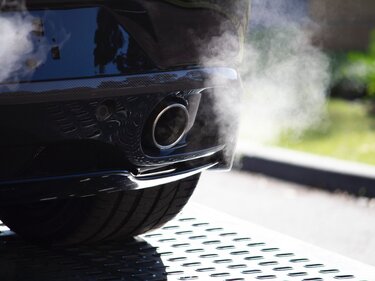With the proposal for a new Euro 7/VII emission standard presented on 10 November 2022, the EU Commission has set an important milestone. The proposal is an important step towards achieving zero-emission mobility in road transport from the year 2035 - a goal of the Green Deal proclaimed in 2019. The proposal is ambitious and includes both tighter requirements but also sensible simplifications such as the elimination of differentiation between fuel types or the merging of vehicle classes.
The TÜV Association and DEKRA welcome the draft submitted in principle, but suggest that the announced drafts of the mandatory delegated acts be submitted as soon as possible. Only with this accompanying legislation can the Euro 7/VII Regulation be conclusively assessed. The experts from TÜV and DEKRA declare their willingness to use the knowledge and experience of the testing organisations to support the drafting of these legal acts, which are still missing, in a targeted manner and to accompany their development.
THE NEW EURO 7/VII LEGISLATION - AN IMPORTANT STEP TOWARDS EMISSION-FREE MOBILITY
The EU Commission's efforts are logical, as concentrations of key air pollutants remain too high in most European countries. Relevant studies by the Clean Air & Climate Coalition, Harvard Medical School and the OECD show that one in eight deaths and one in six Covid 19 deaths in the world are related to air pollution. 10 per cent of the EU's gross national product is lost due to air pollution. Furthermore, 45 per cent of the global climate crisis is due to short-lived climate pollutants. According to calculations by the European Environment Agency, more than 70,000 people die prematurely in this country each year due to illnesses caused by air pollution. According to the Federal Environment Agency, 83 per cent of all measuring stations in Germany have detected a nitrogen oxide value that is above the new WHO limit of 10 micrograms per cubic metre. Road traffic is a major contributor to these emission exceedances, especially in cities; in Europe, for example, 39 per cent of NOx and 11 per cent of PM2.5 emissions were caused by road traffic in 2019.
The Euro 7/VII emissions legislation picks up on this development and consequently focuses in particular on NOx, PN, PM, which mainly originate from private motorised transport. The Euro 7/VII proposal aims at low real vehicle emissions during a longer part of the vehicle lifetime, including the lifetime of the high-voltage battery of electric vehicles, technology- and fuel-neutral, up-to-date limit values for all relevant air pollutants reflecting the state of the art and extended limit values for emissions in real driving conditions.
The definition of a new Euro 7/VII emission standard is also in the context of further important activities of the EU Commission in the direction of mobility that is as emission-free as possible. For example, the corresponding adaptation of immission protection legislation through new specifications has already been started at EU level. The "Green Deal" communication as well as further proposals for concrete legislation by the European Commission, such as the CO2 fleet regulation, also focus on an overarching zero-pollutant target for a pollution-free environment and CO2-free new motor vehicles from 1 January 2035 in the EU.
From the point of view of the testing organisations, the new Euro 7/VII exhaust emission regulations should be published and introduced as quickly as possible with a reasonable lead time. Aspects that ensure that vehicles comply with the legal requirements throughout their entire service life must already be taken into account in the regulations for vehicle type approval, especially for vehicles that will be newly launched on the market by 2035.
Download
Position "New emission standards also apply to zero emissions vehicles"




